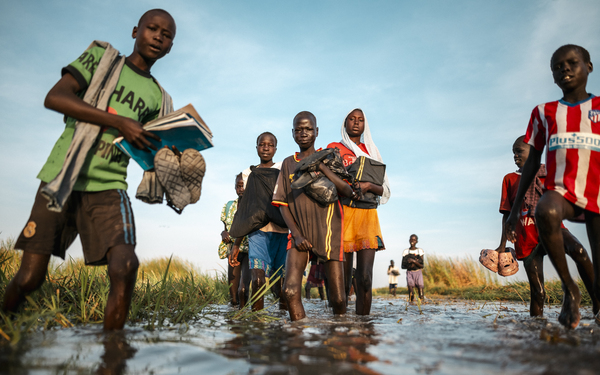This article has been written by the Christian Aid communications team and has been previously published on the Christian Aid webpage .If you are interested in Cash and Voucher Assistance (CVA), Christian Aid has recently published a new insightful report, Who holds the levers of design?: Insights and ideas for cash locally led response
Christian Aid has long recognised that giving people money rather than things is a fast and effective way to assist those impacted by humanitarian emergencies.
In 2023, an eighth of all our project funding and a fifth of all our humanitarian project funding was used this way. At the same time, Christian Aid is committed to the localisation of aid, putting power and resources in the hands of those affected by crisis. This allows them to make decisions that are right for themselves, their family and their community.
Localising cash assistance
In recent years, there’s been a wide debate about how cash and voucher assistance (CVA) can be localised. We’ve noticed that this debate is often founded on several assumptions:
- We need to bring more local actors into the aid system to help with the design and delivery of cash assistance.
- The best way to achieve scale and efficiency gains is by harmonising approaches and often this involved linking with existing government social protection schemes.
Neither of these are inherently wrong. In fact, these ideas are doing a great deal to drive positive change in the international aid sector. However, they are not the full picture.
Challenges for local responders
Firstly, not all local responders want to be part of the international system. Many may wish to either fill gaps that the larger system has left, or simply change their existing activities onto a humanitarian footing in response to a crisis.
For example, those working with marginalised groups may now want to continue working with these people, but offering humanitarian aid as well as their existing services.
Secondly, ‘mutual aid’ and other locally led responses, such as local church groups, already do reach a vast scale, but international agencies find this hard to recognise because we don’t have a strong way of measuring and counting it.
Two approaches to localising CVA
In our new discussion paper and briefing note who hold the levers of design – insights and ideas for cash and locally led response, we explore how there is a difference between localising institutional CVA , which focuses on equipping local actors to work within international CVA systems, and enabling CVA as part of locally led response, which focuses on equipping international aid systems to support and strengthen endogenous responses.
Working together for better aid
We hope that this distinction can carve out a space where international donors will develop tools and processes to work with local groups and spontaneous responders on their terms rather than asking them to adapt to international standards.
This is not to say all standards are wrong, but we believe there should be space to redraw the relationship between the institutional aid world and local responders. The aim is to complement wider aid efforts by recognising that affected communities are always the first and the last responders to any crisis, continuing to work towards long term recovery and development years after international agencies have completed their programmes.
